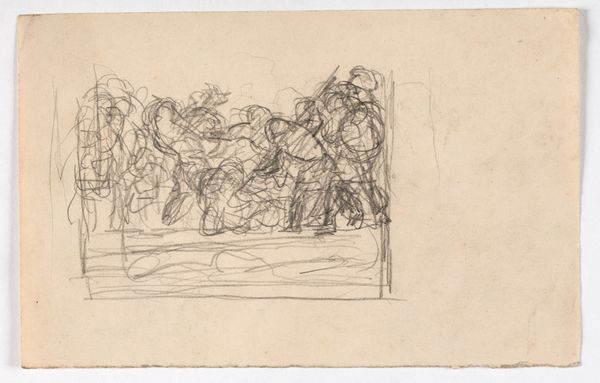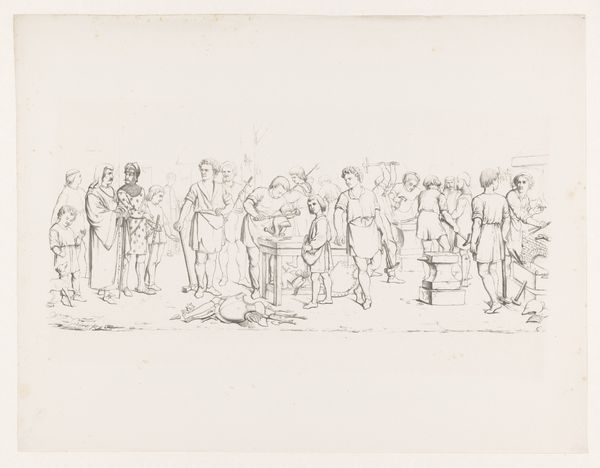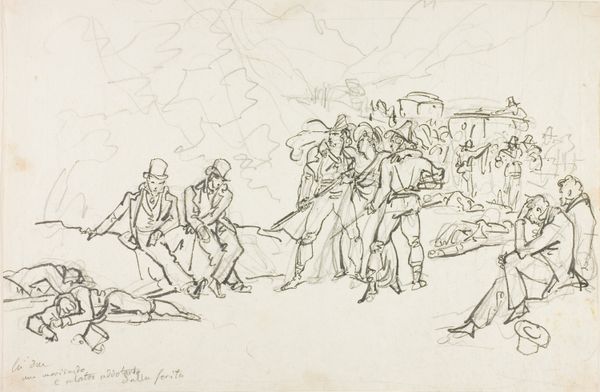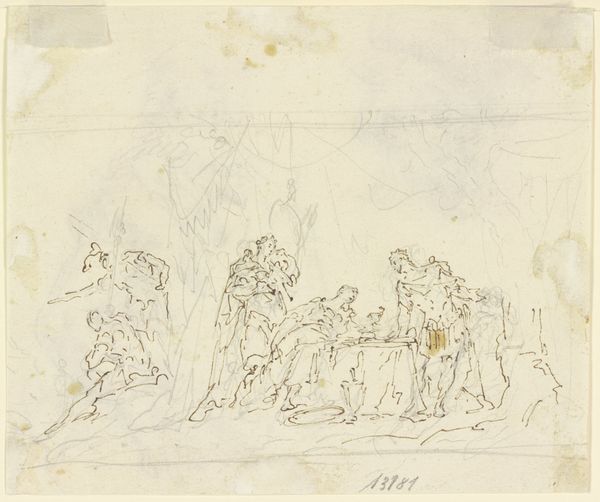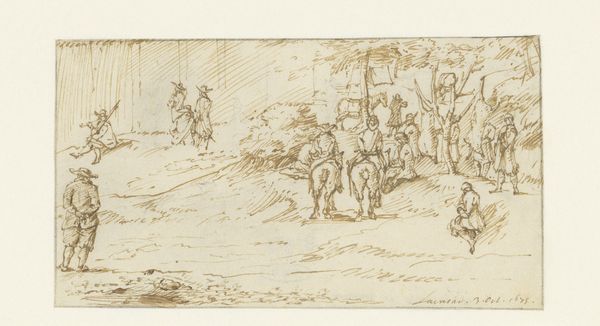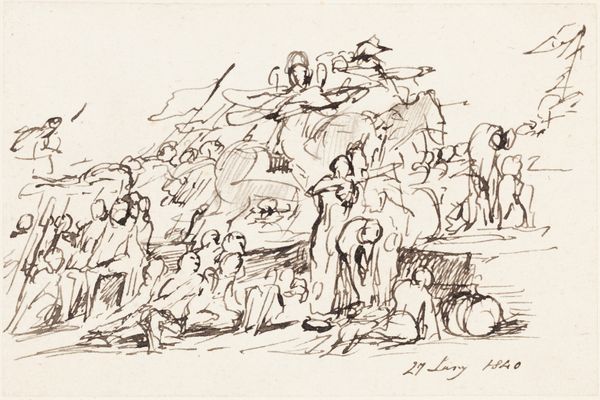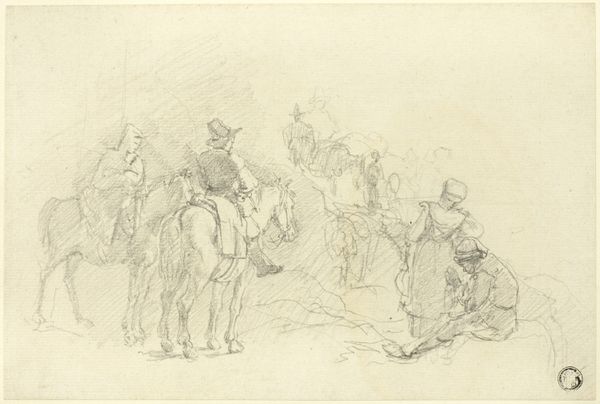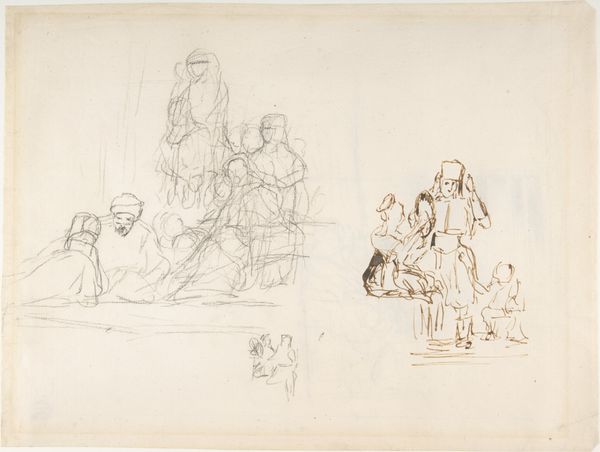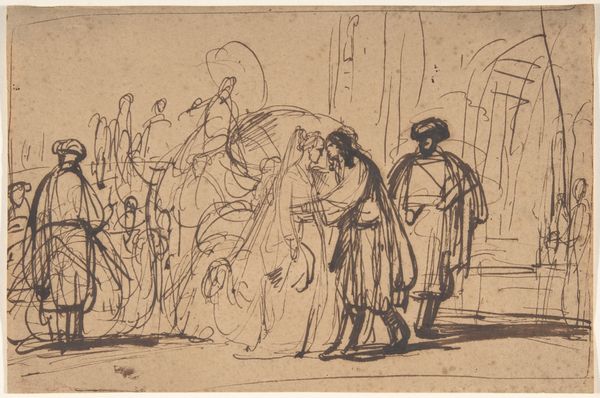
drawing, print, paper, ink, pen
#
drawing
#
ink drawing
# print
#
landscape
#
figuration
#
paper
#
ink
#
pen
#
genre-painting
#
history-painting
Dimensions: 320 × 432 mm
Copyright: Public Domain
Carel van Falens made this drawing, "Hunters Giving Alms to Beggars", with pen and brown ink in the early 18th century. It encapsulates the contradictions of Dutch society at the time. The Netherlands was a major economic power with global trade networks, yet this prosperity existed alongside stark social inequalities. Falens highlights this contrast by juxtaposing wealthy hunters on horseback with impoverished beggars reaching out for assistance. It speaks to the prevailing social hierarchies and the uneven distribution of wealth. The hunters' act of charity can be viewed through the lens of the Protestant work ethic which, in the Dutch Republic, saw almsgiving as a means to reinforce social order. Falens himself was part of a network of artists patronized by the wealthy elite. His images helped to maintain existing social norms. To gain a deeper understanding of this work we could examine archival records documenting social welfare policies, economic data illustrating wealth distribution, and the writings of moralists. Through this we can appreciate how social, political, and economic contexts shape not only the production but also our understanding of art.
Comments
No comments
Be the first to comment and join the conversation on the ultimate creative platform.
